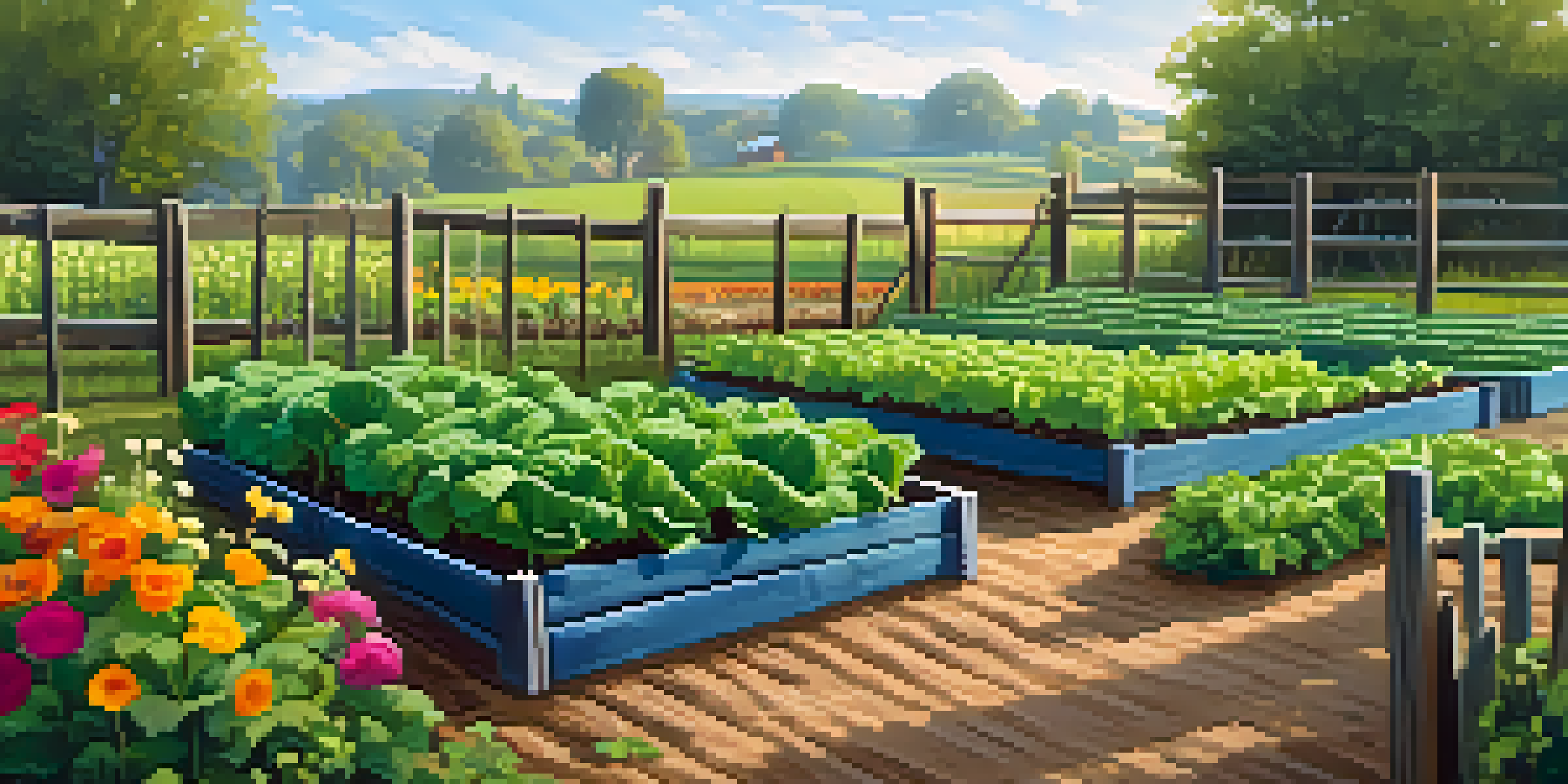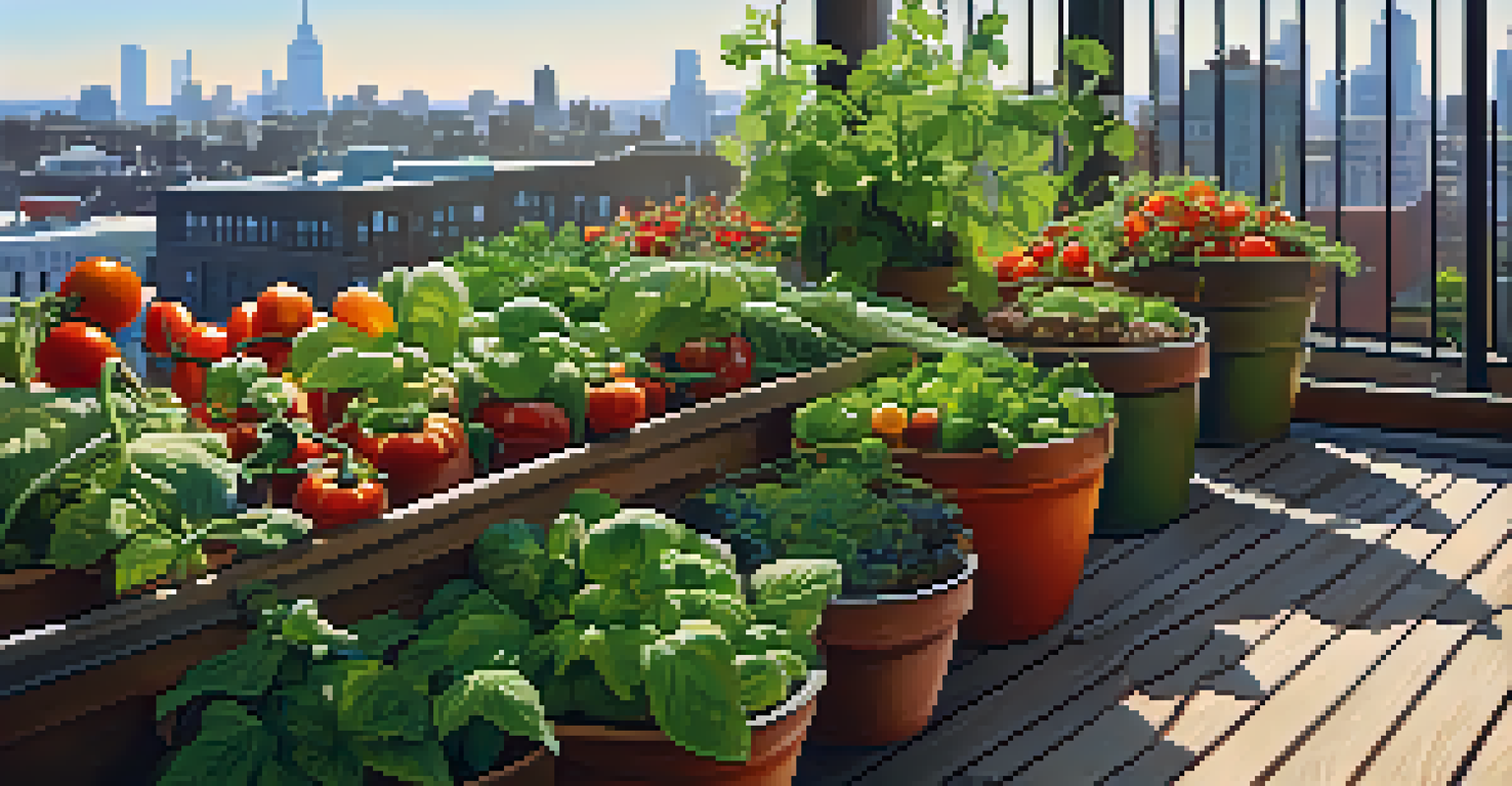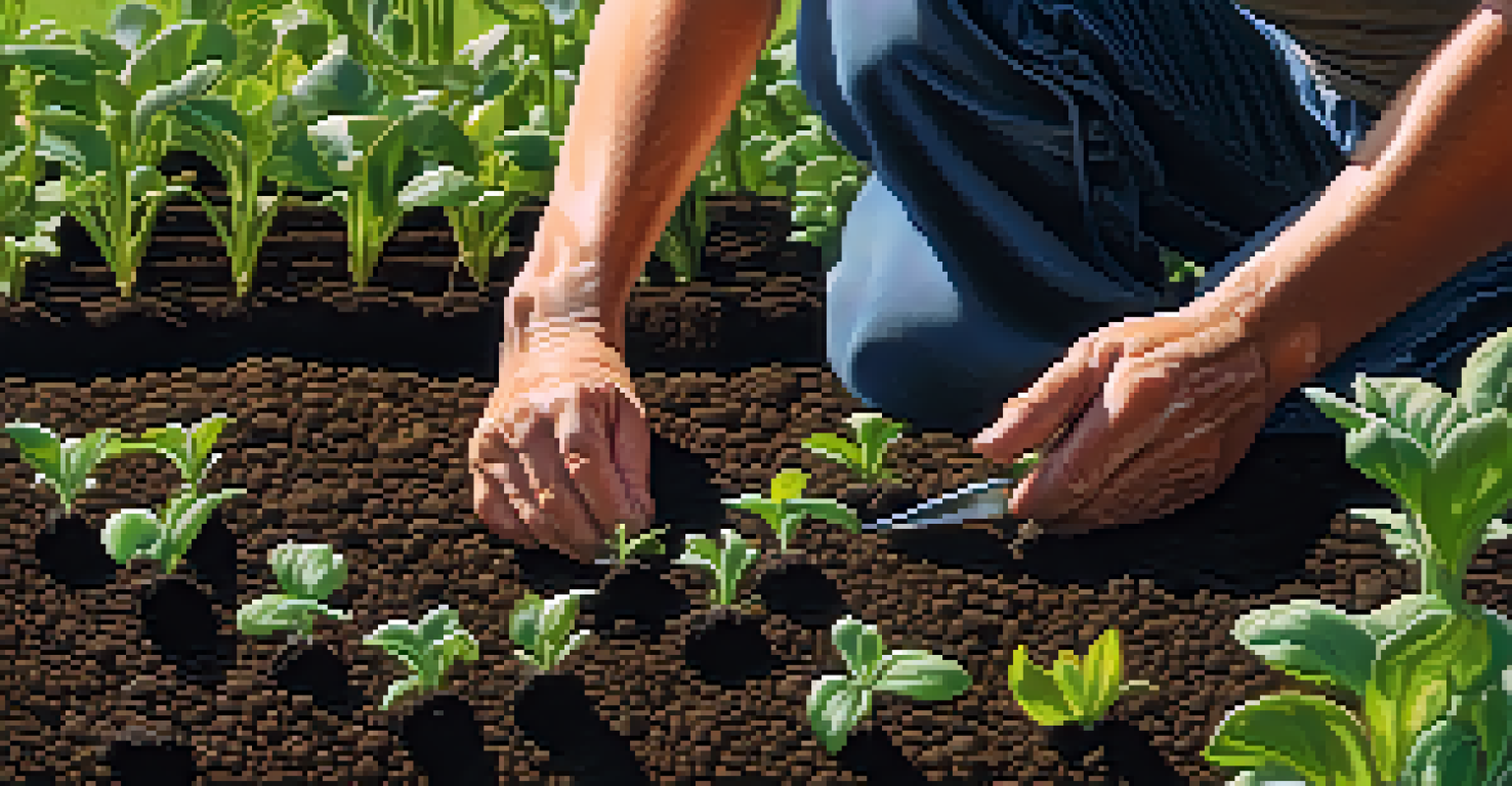Seasonal Planting Guide: When to Plant Your Vegetables

Understanding the Growing Seasons for Vegetables
Every plant has a specific growing season that influences its health and yield. These seasons are typically divided into cool, warm, and frost-sensitive periods. Understanding these classifications can help you make better planting choices to optimize your garden's productivity.
To plant a garden is to believe in tomorrow.
For instance, cool-season crops like spinach and peas thrive in the chill of spring and fall, while warm-season veggies such as tomatoes and peppers flourish in the heat of summer. Recognizing these distinctions ensures you plant at the right time to avoid disappointment.
By aligning your planting schedule with these seasonal categories, you not only enhance your harvest but also enjoy a more vibrant and diverse garden throughout the year.
How to Determine Your Local Frost Dates
Frost dates are crucial for gardeners as they indicate the beginning and end of the growing season. Typically, the last frost date in spring signifies when you can safely plant tender vegetables, while the first frost date in fall marks the time to harvest or protect your plants.

To find your local frost dates, you can check gardening websites, local extension services, or even community gardening groups. This information is essential, especially if you're in an area with unpredictable weather patterns.
Know Your Growing Seasons
Understanding the distinctions between cool and warm-season vegetables helps you plant at the right time for optimal yield.
By keeping an eye on these critical dates, you can protect your plants from frost damage and ensure a successful growing season.
Cool-Season Vegetables: Ideal Planting Times
Cool-season vegetables are best planted in early spring or late summer for a fall harvest. This includes greens like lettuce and kale, root vegetables like carrots, and legumes such as peas. Planting these crops during their optimal times can lead to lush growth and a flavorful harvest.
Gardening is the purest of human pleasures.
For example, if you plant spinach in early March, it can grow well in cooler temperatures and be ready to harvest by late May. This timing allows you to enjoy fresh greens before the heat of summer sets in and affects their growth.
Additionally, some cool-season crops can even survive light frosts, making them resilient choices for early planting.
Warm-Season Vegetables: When to Plant for Success
Warm-season vegetables, such as tomatoes, cucumbers, and peppers, should be planted only after the risk of frost has passed. Typically, this means waiting until late spring when soil temperatures rise and the weather warms up.
For instance, if your last frost date is around May 15th, it’s wise to start planting these crops a week or two later. This allows the soil to warm up and creates the ideal conditions for these heat-loving plants.
Timing Frost Dates is Essential
Local frost dates are crucial for determining when to plant and protect tender vegetables in your garden.
By planting at the right time, you can maximize growth and avoid the frustration of losing young plants to unexpected cold snaps.
Succession Planting: Maximizing Your Garden Space
Succession planting is a smart technique that involves planting new crops in the same space as soon as the previous ones are harvested. This method ensures continuous yield throughout the growing season and helps maximize your garden's productivity.
For example, after harvesting early spring radishes, you can quickly replant the same space with a summer crop like beans. This keeps your garden productive and allows you to enjoy a variety of vegetables during the season.
By planning your succession planting wisely, you can enjoy a steady supply of fresh produce and make the most of your gardening efforts.
Container Gardening: Ideal for Limited Spaces
If you're short on garden space, container gardening is a fantastic option. You can grow a variety of vegetables in pots, making it easier to manage your garden and control conditions like soil and sunlight exposure.
For example, you can plant cherry tomatoes, peppers, or even lettuce in containers on your balcony or patio. This method is particularly beneficial for those in urban areas where traditional garden space is limited.
Maximize Space with Succession Planting
Employing succession planting allows you to continuously harvest crops in the same space, enhancing garden productivity.
Just remember to choose the right container size and type of soil for your plants, as these factors significantly impact growth and yield.
Maintaining Your Vegetable Garden Throughout the Season
Once your vegetables are planted, maintaining them is crucial for a successful harvest. Regular watering, weeding, and monitoring for pests are key tasks that should be part of your gardening routine.
For instance, consistent watering helps prevent stress on your plants, especially during hot summer months. Additionally, weeding is essential as it reduces competition for nutrients and water.

By staying attentive to your garden's needs, you can enjoy a bountiful harvest and a thriving vegetable garden.